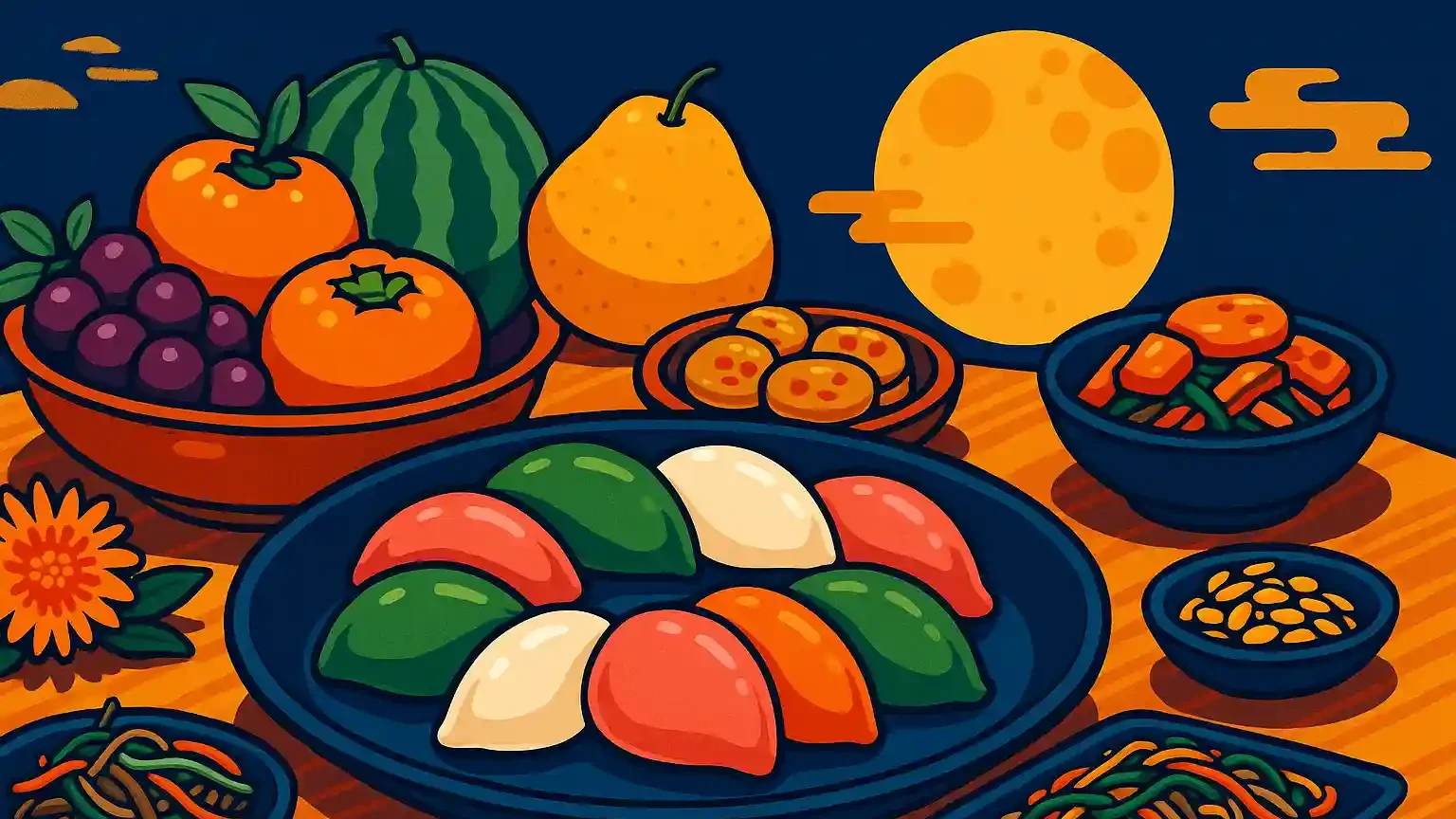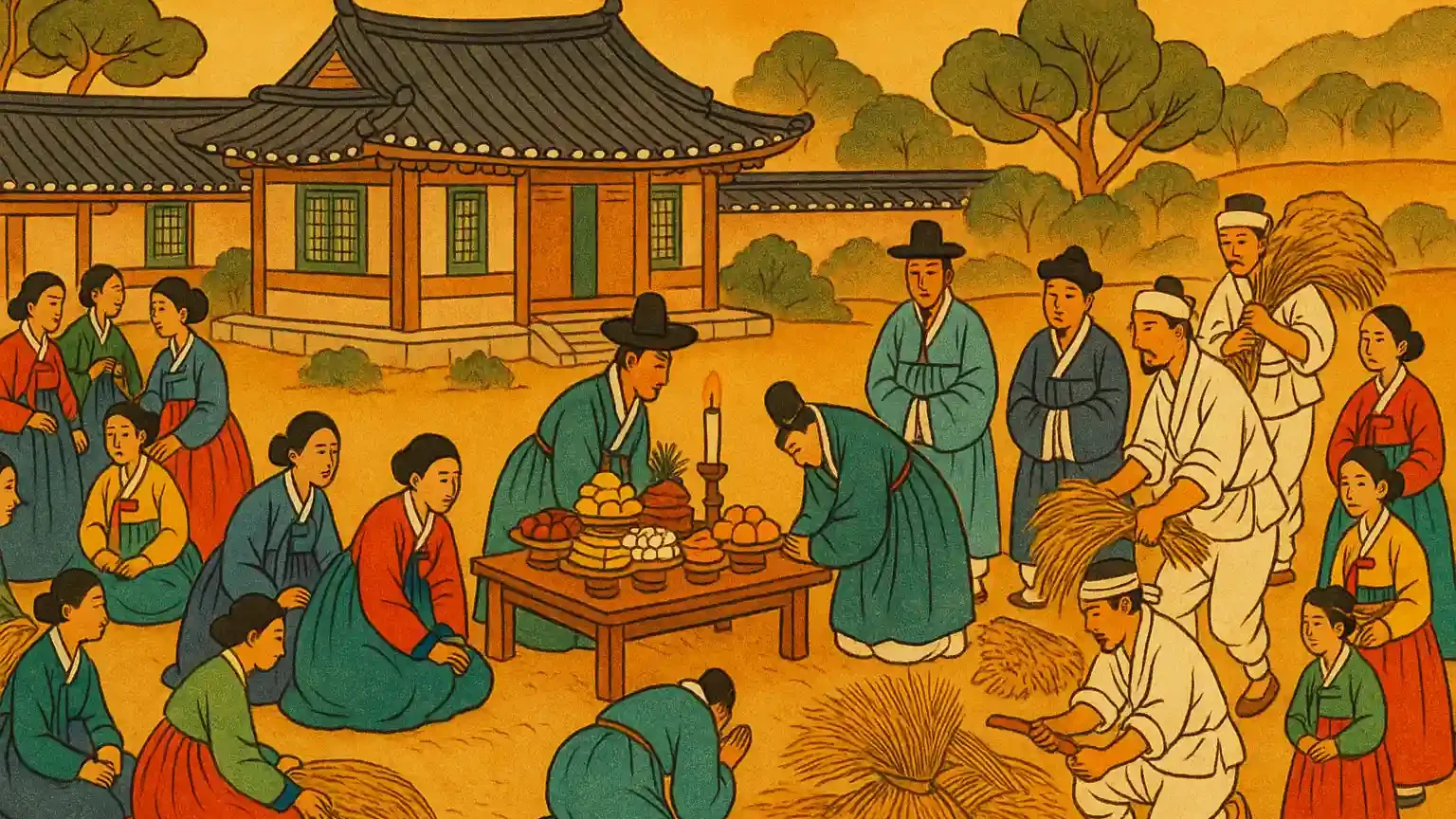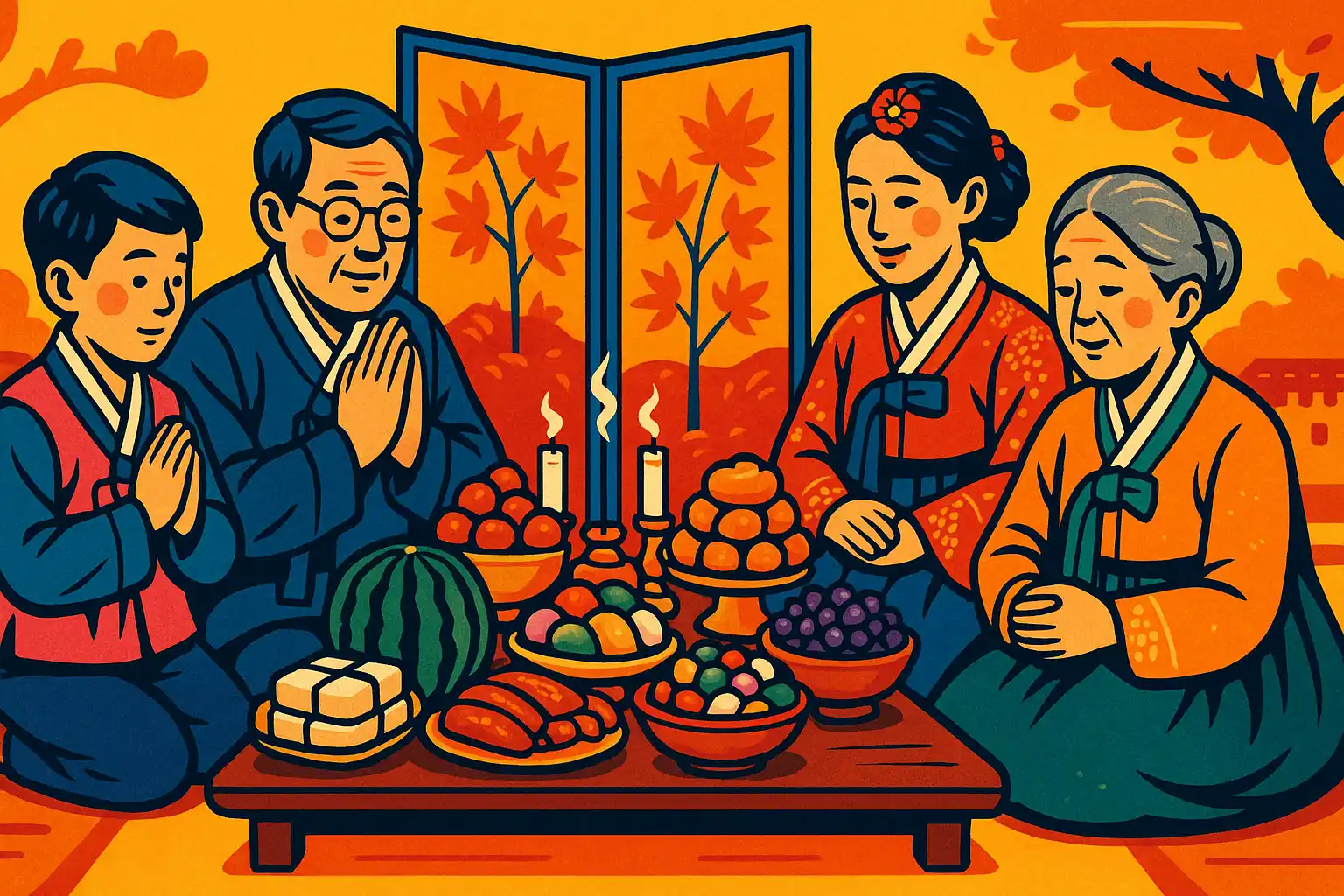The question “What Is Chuseok” arises often for those curious about Korean culture and traditions. Chuseok, also known as Korean Thanksgiving, is one of the most important holidays in Korea. Families gather to honor ancestors, share meals, and celebrate the autumn harvest. This cultural event reflects gratitude, respect, and unity, values that lie at the heart of Korean society.
Understanding Chuseok is vital because it provides insight into how Koreans connect with their past while celebrating the present. It shows the blending of agricultural heritage with modern practices. Moreover, learning about Chuseok helps us appreciate not only the traditions of Koreans but also the universal themes of family, gratitude, and remembrance.
This guide defines the event, explains its meaning, explores its history, and describes its continued importance. By doing so, it answers the question of what it truly represents in both ancient and modern times.
Definition of Chuseok

Chuseok (추석) is a major harvest festival in Korea. In dictionary terms, it is defined as a traditional holiday where families honor their ancestors and share food during the autumn full moon. It is often called “Korean Thanksgiving Day” because it centers on giving thanks for a plentiful harvest.
Synonyms or variations used within cultural discussions include Hangawi, which means “the great middle of autumn.” This name emphasizes its timing on the 15th day of the 8th lunar month.
The Chuseok definition also highlights two key practices: charye (ancestral rites) and seongmyo (visiting ancestral graves). Families prepare special dishes such as rice cakes (songpyeon) and fruits to express gratitude. These offerings symbolize respect for ancestors and hopes for continued blessings.
Thus, Chuseok is both a cultural term and a significant practice. It represents family unity, agricultural traditions, and the enduring values of Korean society.
Detailed Explanation of Chuseok
To understand what is Chuseok, it is important to explore its rituals, foods, and cultural significance.
Family Gatherings and Ancestral Rites:
During the event, families gather from across the country. They perform charye, setting a table with seasonal foods to honor their ancestors. This practice reflects the deep respect Koreans hold for family ties and heritage.
Visiting Ancestral Graves:
Another key element is seongmyo. Families visit ancestral graves to clean the sites and offer food. This act of care strengthens the connection between the living and their ancestors.
Traditional Foods:
The event’s meals are central to the celebration. The most iconic food is songpyeon, half-moon-shaped rice cakes filled with sesame, beans, or chestnuts. Seasonal fruits, vegetables, and dishes such as jeon (savory pancakes) are also prepared. These foods symbolize abundance and gratitude.
Games and Folk Entertainment:
Beyond rituals, Chuseok includes cultural games and performances. Activities like ssireum (Korean wrestling), ganggangsullae (circle dance), and traditional music bring communities together. These fun traditions balance the solemn rituals with joy and entertainment.
Modern Observances:
Today, it also means heavy travel, as millions of Koreans journey to their hometowns. Modern families may adapt rituals, but the spirit of gratitude and unity remains unchanged.
Therefore, it is not just a holiday; it is a celebration of life, heritage, and community.
History or Origin of Chuseok

The history of Chuseok dates back over 2,000 years. It is believed to have originated during the Silla Dynasty (57 BCE – 935 CE) as part of a weaving contest known as gabae. The competition concluded with a feast, marking the beginnings of harvest celebrations.
Over time, it evolved into a full harvest festival. The lunar calendar determined its timing, ensuring it coincided with the harvest moon when crops were abundant.
During the Joseon Dynasty (1392–1897), Chuseok became formalized as a national holiday. Practices such as ancestral rites and food offerings became widespread, shaping the traditions observed today.
The origin of Chuseok shows its dual nature: it began as a communal celebration of harvest and transformed into a deeply spiritual and familial holiday. Its history reflects the agricultural roots and strong family values central to Korean society.
Applications and Uses
It continues to play a major role in both traditional and modern Korea.
Cultural Significance:
It is a cornerstone of Korean traditions. It strengthens family bonds and preserves ancestral rituals. Families use this holiday to teach younger generations about respect and heritage.
Economic and Social Impact:
During the famous event, businesses experience a surge in travel, retail, and gift-giving. Popular gifts include fruit baskets, meat sets, and household items. This exchange reflects gratitude and community spirit.
Tourism and Global Awareness:
The eventattracts global interest. Cultural festivals showcase Chuseok abroad, introducing people to Korean food, dance, and traditions. For tourists in Korea, experiencing Chuseok firsthand offers valuable insights into Korean life.
Modern Adaptations:
Some Koreans now celebrate Chuseok with smaller gatherings due to urban lifestyles. Yet, even in simplified forms, the holiday continues to embody unity, gratitude, and remembrance.
Educational Value:
It is studied in cultural and historical contexts. Schools use it to teach about agricultural heritage, family structures, and Korean values.
In essence, it remains a vital link between past and present, tradition and modernity.
Chuseok in the Modern World: Global Influence and Cultural Exchange
While Chuseok is deeply rooted in Korea’s history, its influence has expanded far beyond national borders in today’s interconnected world. The holiday is increasingly recognized internationally through cultural festivals, media, and diaspora communities. Korean cultural centers worldwide host Chuseok events, showcasing traditional music, folk games, and food demonstrations. These celebrations not only connect Korean expatriates with their heritage but also introduce non-Koreans to the richness of Korean traditions.
Global interest in Chuseok has grown alongside the Hallyu Wave, driven by K-pop, K-dramas, and Korean cinema. International fans often see depictions of Chuseok celebrations in shows or movies, sparking curiosity about the holiday’s rituals and foods. As a result, Chuseok has become part of cultural diplomacy, strengthening Korea’s soft power by fostering global appreciation for its traditions.
Additionally, tourism during Chuseok has become a unique attraction. Visitors to Korea during this period experience both the festive atmosphere and practical realities, such as bustling travel, family gatherings, and temple or palace visits. These immersive experiences provide tourists with a deeper connection to Korean life and values.
In this way, Chuseok has evolved into more than a national celebration. It is now a global cultural exchange, blending heritage with modern identity, and allowing people around the world to experience the essence of Korean gratitude and unity.
Conclusion
Chuseok is more than a harvest festival—it is a living tradition that unites past and present, family and community, gratitude and joy. Rooted in Korea’s agricultural heritage, it has grown into one of the most cherished celebrations of Korean culture. Through ancestral rites, shared meals, and festive games, Chuseok expresses the values of respect, unity, and thankfulness that lie at the heart of Korean society. In today’s globalized world, its influence extends far beyond Korea, serving as a bridge of cultural exchange and a symbol of shared human values. Whether celebrated in bustling Korean cities, quiet villages, or international communities abroad, Chuseok continues to embody the spirit of togetherness and gratitude, making it not only a national treasure but also a meaningful tradition for the world to admire.
Resources
- Pelago – Chuseok in Korea 2025: When to Go, What to Do, and What to Eat
- Access to Culture – Chuseok: How to Celebrate the Korean Way
- The Korea Herald: Chuseok Traditions Today
- National Museum of Asian Art – Chuseok: Modern Meets Traditional at NMAA
- Travelodge Hotels – Chuseok 2025: How to Join Korea’s Harvest Festival as a Traveler

